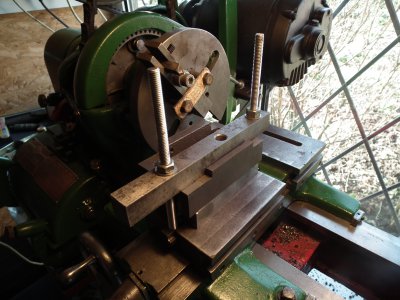- Joined
- Sep 20, 2012
- Messages
- 560
The problem in this case is that you quite literally can't see what you are doing. Fortunately, running the power cross feed in reverse isn't done much. I wonder what part would break?
Robert D.
Hi Robert, I use my power cross feed quite often in reverse when facing a large piece and when milling/fly cutting.
For milling I use a Myford milling attachment fitted to an Atlas 'turret lathe' slotted cross slide, this cross slide is the wrong shape for the 'uncoupling system' to work, I found this out the hard way!
All that happened was that the cross slide hit the crank handle, which jammed the whole thing up tight, luckily one belt was loose enough to slip so there was no more damage than a very slightly wobbly crank handle due to the lead screw getting bent, almost unnoticeable though and not worth trying to straighten in case that makes it worse.
It was quite a struggle getting it unjammed.
Tighter belts might have meant more broken parts, because the sacrificial traverse lead screw bearing would not have failed safe as the half nuts weren't engaged.
My old man used to say 'It doesn't matter what you do in life as long as you learn something every day' I learned very quickly that day!
Bernard

